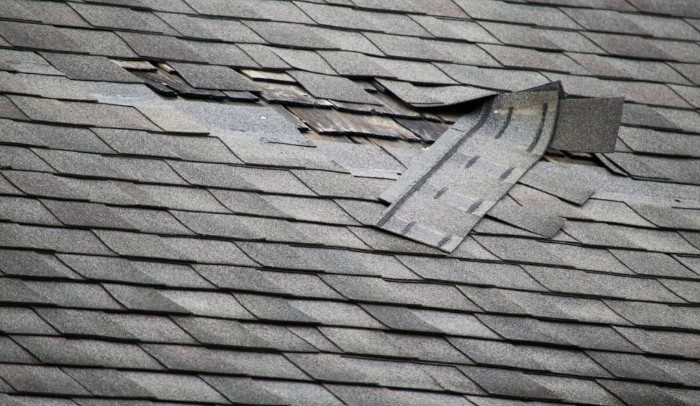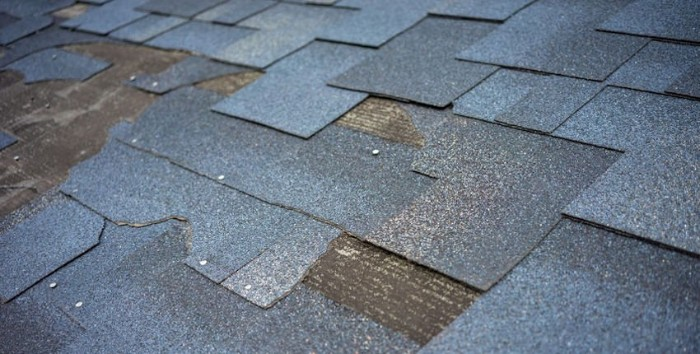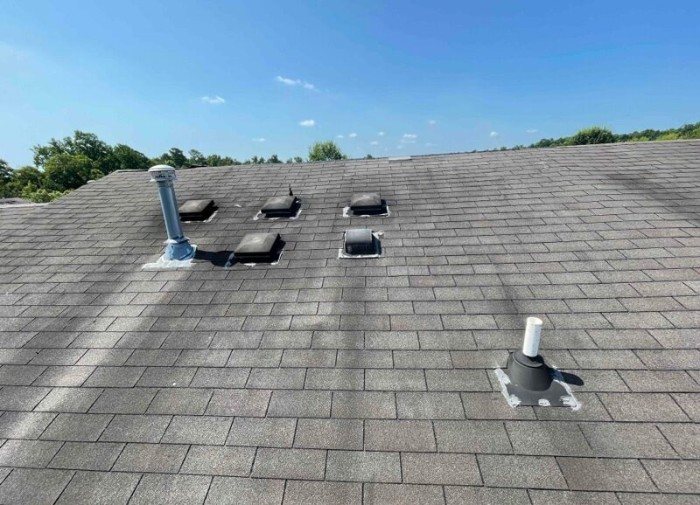
It’s not always easy to tell when you need a new roof or repairs, but the earlier you catch a problem with your roof, the better. Knowing the signs that indicate you may need roof repair can be invaluable in preventing more extensive problems and costly damages down the line.
In this post, we’ll discuss some of the most important indicators for when to call a professional contractor to inspect and repair your rooftop. From shingles falling off or roofing materials missing; deformed ridges, moss growth & other vegetation on your roof; water spots on ceilings or walls; broken flashing; excessive granules in downspouts.
All these are common warning signs that something might be amiss with your living quarter’s ceiling. Read up on possible issues below.
Shingles that are curling or buckling
This can be an indication of a weakened structure and can be a sign that your sagging roof needs repair. The shingles may not lay flat on the roof surface composite, or asphalt shingles may appear to be lifting off in certain spots. This could indicate an inadequate installation job, poor ventilation, or improper attic insulation.
Granule loss
Granules form the outermost layer of asphalt shingles and can be the first sign that your roof needs repair. The roof granules protect from UV rays and help to keep water out of your home. When you see them washing away or gathering in your gutters, it’s time to check for other signs of distress.
Missing shingles

If you notice cracked shingles or missing pieces, it’s time for repairs. Missing shingles occur due to extreme weather conditions, such as strong winds and hail. The damage can also be caused by improper installation or age. If the missing pieces are not replaced soon, it may result in more costly repairs.
Water leakage or stains on the ceiling
Water leakage or water stains on your ceiling is a telltale sign that your roof needs repair. The source of the leaky roof will need to be identified and repaired as soon as possible to prevent further water damage or mould growth.
Daylight through the roof boards
If you can see daylight from your attic, this means there are gaps between the panels of your roof boards. The gaps may have been caused by wear and tear, improper installation, or extreme weather conditions. The roofing material should be inspected for air leaks to prevent further damage.
Animal intrusions
If you have seen any signs of animals entering your attic, it’s best to call a professional right away. They will be able to identify the source of the intrusion and offer advice on repairs that need to be made to prevent further damage.
Blistering or cracked paint
This is a sign that moisture has gotten into the roof and is causing damage. The paint can become cracked and blister, a sign of leaking or inadequate ventilation in the house or attic. The roof should be inspected for any leaks or other damage that must be repaired.
Algae or mould growth
Algae and mould growth indicate too much moisture, or trapped moisture, in your roof. The growth can cause discolouration and staining, which can be unsightly. The roof should be inspected for any possible leaks or other damage that must be repaired to prevent further damage from the excessive moisture.
Leaks around vents, chimneys, or skylights

Leaks around these areas indicate that the sealant and flashing may need to be replaced. The seals are meant to stop water from entering your home, so it’s important to repair any leaks as soon as they’re noticed. The roof should also be inspected for any other signs of damage or deterioration.
Signs of moss or algae growth
This indicates that there may be a leak in your roof, as moss and algae growth can thrive in a moist environment. The roofing contractor areas affected should be inspected for any water damage, mould growth, or other signs of deterioration. The roof should also be assessed to determine whether the ventilation is adequate and the attic insulation is current.
Gutters overflowing with debris
Clogged roof leaks or gutters indicate your roof isn’t functioning correctly. The gutters should be cleared of debris and inspected for any damage or deterioration that may need to be repaired to prevent further problems down the line. The roof should also be assessed for any possible leaks or other signs of damage.
Water stains on the ceiling.
Water leaking through the roof will stain the ceiling, so look for signs of water damage. Cracks in the drywall or watermarks on the ceiling can indicate that there is a leak in your whole roofing system. The areas should be inspected for any water damage and repaired if necessary, as well as assessing the roof for any other signs of deterioration.
Missing shingles
Missing or broken shingles are another sign that your roof needs to be repaired. The area should be inspected for water damage and shingles replaced if necessary. The roof should also be assessed for other wear and tear or possible leaks.
If you notice any of these signs, it’s best to contact a professional roofer for an inspection and repair. The earlier these issues are addressed, the better off you’ll be in the long run. A can help identify potential problems and provide solutions that will keep your roof in good condition for years.
How to Fix Them
There are a few different ways to repair your roof, depending on the extent of the damage. The first step is to call a professional who will help you assess the condition of your roof and determine what repairs need to be made. The following steps can help get your roof back in good shape:
- Replacing any missing shingles or cracked flashing
- Securing any loose seams or nails
- Treating algae and mould growth
- Replacing any damaged gutters or downspouts
- Installing ventilation to improve airflow
- Checking the attic insulation to ensure it is up to date and effective.
In some cases, the roofing professional may need to be completely replaced if the damage is too extensive. The cost of repairs or a replacement will vary depending on the materials used and the roof size, so it’s important to get an estimate from a professional before making any decisions.
FAQs
How do I know if my roof needs repairing?
The best way to determine if your roof needs repairs is to inspect it for any signs of damage, such as missing shingles, leaking around vents and chimneys, water staining on the ceiling, moss or algae growth on an old roof, and clogged gutters if you notice any of these issues, intact a professional for an inspection and repair.
How often should I inspect my roof?
Inspecting yIt’sroof at least once a year is recommended to identify potential problems and take care of them before they become more serious. The areas around vents, chimneys, and the gutter system should be checked for any signs of damage or deterioration.
What are the signs that my roof needs to be replaced?
If your asphalt shingle roof is more than 20 years old, it may need to be replaced, as most asphalt shingle roofs don’t last longer than this. The contest way to determine if a replacement is necessary is to have a professional inspect the roof and estimate repairs or a replacement. If the damage is too extensive, opting for a full roof replacement may be best.
Are there any tips for keeping my roof in good condition?
Regular maintenance and inspections are key to keeping your roof in top shape. The gutters should be cleared of debris, algae, or moss growth and treated, and ventilation should be checked to ensure proper airflow. The attic insulation should also be checked to make sure it is up-to-date and effective. Taking these steps can help extend the life of your roof.
Can you repair a roof without replacing it?
Sometimes, it’s possible to repair a rooit’sthout replacing it. The extent of the repairs will depend on the severity of the damage. Still, typically a professional can assess the situation and determine what needs to be done to get your roof back into good shape. The cost of repairs will vary depending on the materials used and the roof size.
Conclusion:
Now that you know the most commyou’rens and symptoms to look for if you think your roof needs repair or replacement, it’s important to take action. It’s called a professional if any signs are present.
Catching a problem early can help prevent more extensive roof damage in the long run and keep your home safe for years. So if you want guidance about what might be wrong with your roof, contact a reliable contractor today.
They can inspect your roof, diagnose any issues, and recommend any necessary repairs or replacements. Whether it’s fallen shingles, vegetation on your roof, water spots inside, or broken flashing, the sooner you act on these signs, the better off your roofing company, you and your family will be.